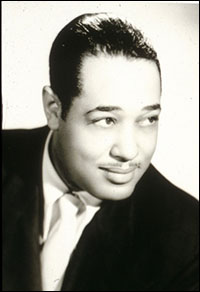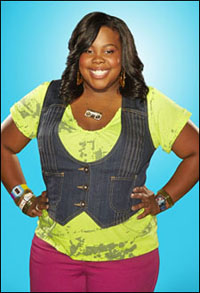
*
The world of jazz entertainment has probably never had a better or more unwitting ally than the stiff and upright U.S. Congressman Andrew Volstead, Republican of Minnesota. Congressman Volstead was the floor manager and chief promoter of the act that bears his name, which enforced the 18th Amendment to the U.S. Constitution, outlawing the sale, manufacture, and transportation of alcoholic beverages throughout the land. The Volstead Act, which ushered in prohibition, had many unintended consequences, including the rise of organized crime, and the creation of the American speakeasy. It was in these illegal but largely public nightclubs that jazz found its first secure foothold with the broader American public. And no speakeasy was sexier, more glamorous, or more popular than Harlem's Cotton Club, which opened in 1924.
The club was the brainchild of bootlegger Owen "Owney" Madden, who was doing a stretch in Sing Sing at the time. His motivation had nothing to do with music; he was looking for an outlet to sell beer. But he reasoned that the bigger and classier the crowd, the more beer he could sell, and that the price might be directly related to the reputation of the joint he was selling it in. Hence, The Cotton Club, Harlem's ritziest address, where the entertainers were black, the audience was white, and the promise of a sophisticated brush with the hip lush life was irresistible.
Much has been made of the Club's racist policies, which played into stereotypes we now find shockingly antediluvian: chorines were young and uniformly light-skinned African-Americans, décor and performance style featured a "jungle" motif, and the audience, until Duke Ellington made enough of a fuss about it, was absolutely "restricted." Madden didn't want his patrons made uncomfortable by having to associate with denizens of Harlem; the customers paid their money to be entertained by them, not to socialize.
But within this indefensibly restrictive atmosphere, something extraordinary was happening every night on stage: musicians, singers and dancers were creating a form of entertainment of a quality and style that had never been seen before. Jazz voices were blending with Broadway entertainers and bending two performing traditions toward each other, changing definitions and giving voice to a kind of egalitarian expression of joy. There was no real structure, no plot, not much in the way of comic routines or sketches. But fueled by a new class of African-American stars, The Cotton Club was presenting the greatest floorshow on earth.
| |
 |
|
| Duke Ellington |
Ellington wrote a lot of the music for the club, and much of what he wrote was seminal, lifting jazz composition to an unforseen level of brilliance. He was creating music that transcended mere popularity. Other top-flight composers and lyricists who provided hit tunes that happily coexisted with Ellington's jazz compositions. Jimmy McHugh and Dorothy Fields penned "I Can't Give You Anything But Love" and "Digga Digga Doo," using them in Broadway revues, and a young Harold Arlen cut his eye teeth at the club with lyricist Ted Koehler. "Stormy Weather" and "I've Got the World On a String" were written for the club's shows, among Arlen and Koehler's many hits. But between 1927 and 1931, Ellington set the musical style, and set his own future in motion in the process. According to Schaap, "The Cotton Club employment allowed Ellington to finalize the personnel and the Big Band size of his ensemble. The exposure was of the highest profile, and Duke Ellington became a big name in the Big Apple. Network broadcasts and prominent Victor recordings made Ellington a national superstar." By 1930, Ellington was famous enough to decamp for Hollywood.
The singers and dancers fronting the show were also virtuosos — including the Nicholas Brothers, Bessie Smith, Ethel Waters, Snake Hips Tucker, Peg Leg Bates and a 16-year-old Lena Horne. Others, like the largely forgotten singer and tapper Cora La Redd, can still be glimpsed on YouTube, displaying a startlingly commanding style and power. Many of these gifted artists operated in the shadow of the white entertainment business, consigned to working the TOBA vaudeville circuit, a black touring route that played to black audiences in largely segregated enclaves of American cities. (The initials, which stood for Theatre Owners Booking Association, were widely understood by the artists involved to mean Tough On Black Asses.)
| |
 |
|
| Amber Riley joins the cast | ||
| Photo by FOX |
As a result, this new Cotton Club Parade celebrates the past while keeping an eye on the present and future. It blends Duke Ellington's music, newly minted by Wynton Marsalis and the Jazz at Lincoln Center Orchestra, with a cast drawn from traditionalists and modernists reaching for a full range of styles and attitudes. We hope, after all these decades (the Harlem club closed in 1936, the Times Square location in 1940) it retains the freshness that marked the original editions, and remains the greatest — if perhaps now nearly the only — floorshow on earth.
*
Cotton Club Parade, Nov. 14-18, is conceived by Jack Viertel, featuring Jazz at Lincoln Center Orchestra with Wynton Marsalis, who is music director. The production is directed and choreographed by Warren Carlyle. The show will feature the Jazz at Lincoln Center All Stars under the direction of Daryl Waters. The 2012 cast includes and Alexandria "Brinae Ali" Bradley, Andrew "Dr.Ew" Carter, Kyra Da Costa, Carmen Ruby Floyd, Jared Grimes, La Tanya Hall, Jeremiah "Supaman" Haynes, Joshua Henry, Christopher Jackson, Monroe Kent III, Adriane Lenox, Karine Plantadit, T. Oliver Reid, Amber Riley and Britton Smith.
(Jack Viertel is artistic director of Encores! This feature first appeared in the fall 2011 Playbill of City Center.)










